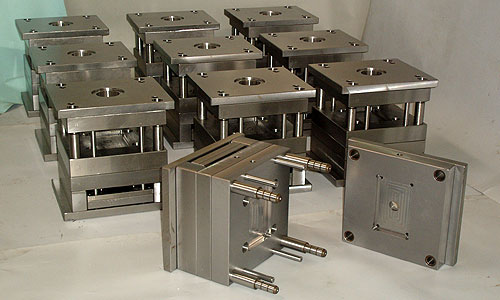Introduction
Mold bases are essential components in the manufacturing industry, serving as the foundation for various molds used in injection molding, blow molding, and other production processes. In Indonesia, where the manufacturing sector is rapidly evolving, understanding the details of mold bases can significantly streamline operations and enhance product quality. This guide provides valuable insights to help manufacturers in Indonesia optimize their mold base selection and utilization.
What are Mold Bases?
Mold bases are the structural components that hold the mold in place during the manufacturing process. They provide stability and alignment for the molding system, ensuring that products are produced accurately and efficiently. Mold bases come in various designs, materials, and sizes, tailored to meet the specific needs of different industries.
Key Components of Mold Bases
Understanding the key components of mold bases can help manufacturers choose the right solution for their specific needs. Here are some essential parts:
- Top Plate: Connects the mold to the injection molding machine and holds the mold halves together.
- Bottom Plate: Provides a mounting surface and supports the mold and the injection system.
- Guide Pins: Ensure proper alignment between the mold halves during operation.
- Locating Rings: Enclose the injection nozzle, ensuring precise connection and unhindered material flow.
- Cooling Channels: Allow for temperature regulation and control during the molding cycle.
Types of Mold Bases
There are several types of mold bases available in the market, designed to cater to various manufacturing needs. The most common types include:
- Standard Mold Bases: Pre-engineered bases offering reliability and extensive compatibility.
- Custom Mold Bases: Tailor-made solutions designed to meet specific requirements.
- Single and Multi-Cavity Bases: Depending on production volumes, bases can be designed to hold single or multiple molds.
- Hot Runner Bases: Allow for better temperature control, reducing material waste and cycle times.
Importance of Choosing the Right Mold Base
Selecting the right mold base is crucial for successful manufacturing. The appropriate mold base ensures:
- Improved Product Quality: Accurate alignment leads to better precision in the produced items.
- Increased Efficiency: Right configurations reduce cycle times and the likelihood of defects.
- Cost-Effectiveness: Optimal material use and fewer reworks save money.
- Enhanced Durability: Quality mold bases prolong the lifespan of the mold itself.
Streamlining Manufacturing Processes in Indonesia
The manufacturing sector in Indonesia is rapidly growing, driven by the demand for higher quality products and reduced production costs. Here are some strategies manufacturers can adopt to streamline their processes using mold bases:
- Automate and Optimize: Embrace automation to improve efficiency and reduce human error in the molding process.
- Invest in Quality Materials: Use high-quality materials in mold base construction to enhance durability and performance.
- Continual Training: Ensure that the workforce is trained in best practices related to mold base handling and maintenance.
- Regular Inspection: Implement regular checks to identify wear and tear, ensuring mold bases remain in optimal condition.
Conclusion
In conclusion, mold bases play a critical role in streamlining manufacturing processes in Indonesia. By understanding their components, types, and the importance of proper selection, manufacturers can enhance product quality, increase efficiency, and reduce costs. As Indonesia's manufacturing landscape continues to evolve, leveraging the advantages of high-quality mold bases will be essential for businesses aiming to compete on both a local and global scale.

